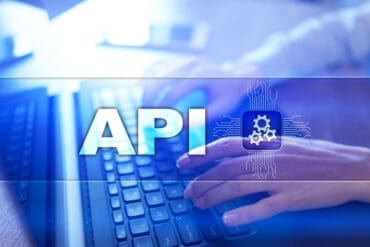
Continued investment in the areas of APIs and automation will be the key for many companies to navigate 2023 and beyond.
Business leaders know that automation is key to future growth. In fact, research from The Economist Intelligence Unit shows that 93% of companies say automation can kickstart digital transformation. However, automation is not just one strategy or one technology. Automation encompasses a wide range of technologies that can create more efficient workflows and processes. And increasingly, investments in automation technology are complemented and enhanced with API investments.
Automation platforms can do things like understand what’s on a screen, complete the right keystrokes, navigate systems and file documents, and identify and extract data before recommending an action.
API automation uses specialized tools that specify ways that software can interact with an application exclusively on the back end. APIs provide connectivity between a given application and the web server, transforming the automation process. In the oncoming years, the use of APIs is expected to skyrocket—with 98% of enterprise leaders saying APIs are a critical part of their digital transformation efforts and 97% agreeing that successfully executing an API strategy is essential to securing organizations’ future revenue and growth.
But what makes APIs so integral to the automation process?
API integration can improve efficiency and performance, reduce execution time, and provide more flexibility in automation projects. This integration enables users to connect third-party business systems with essential automation capabilities, such as computer vision, document understanding, and workflow design.
See also: Are Industry-Specific APIs the New Norm?
When looking to integrate APIs, organizations must keep these four features in mind to truly transform their automation process:
1. Ease of authentication
Automation developers need to authenticate to automate. Authorized connectivity should be easy to perform from any point within an end-to-end automation platform.
API integration makes authentication easy, overcoming the weaknesses of shared credentials by creating a long series of numbers and letters that are included in a request header or request URL that the server automatically stamps. This authentication process allows the user to access their data easily and simply. API authentication also makes a user’s account more secure by adding that additional layer of authentication, creating a harder interface for cybercriminals to access private, secure information.
While the dynamics of API authentication can differ depending on the method chosen, API authentication better helps data—and the automations associated with that information— to stay secure amongst users.
2. Robust, prebuilt, and custom connectors
A catalog of prebuilt connectors significantly simplifies API integration by containing the necessary native objects and standardized activities associated with a given application. This reduces reinvention and opens automation through API connectivity to everyone, from professional developers to end users.
Companies know productivity gains—including substantive cost reductions—can be delayed by system integrations that are time-consuming or unavailable. Providing closely aligned, prebuilt API integration capabilities is key to eliminating those incorporation issues. Connectors should be centrally managed to validate connections and enable and disable access. Plus, automations should rely on connectors to invoke any method through APIs and applications. Creating new automations using prebuilt connectors eases workloads, enabling citizen developers to easily deploy API-based integrations for many business processes. API-based connectivity is essential for the creation, scalability, and availability of superior enterprise automation.
While being able to launch prebuilt connectors is vital, making new connectors is also a powerful option for enhancing your connector catalog or supporting one-off, proprietary applications. Custom connectors allow workers to build their own unique automations for any task or assignment that needs to be tackled. An option to import common API formats can quickly free up developers from integration bottlenecks, simplifying the automation process. When prebuilt connectors aren’t available for your automation’s required integration, API-based connectivity makes it easy to create your own. Custom connectors help ease the process of building specific automations and workflows that interact with other APIs, allowing for further automations and innovations with a few simple keyboard strokes and mouse clicks.
3. Event triggers
Server-side triggers automatically empower automations to work across dozens of applications based on events in connected systems. Server-side events include data updates, insertions, or added data and deletions.
An automation can be triggered by an event, with a certain entity state, at a given time. Event triggers are another type of automatic trigger in that they don’t require manual activation. Instead, they’re automatically triggered when a certain event happens. These can be specified directly or more flexibly via templates. It is also possible to specify multiple triggers for one automation.
Monitored events could include a new employee added to an HR (Human Resources) system that triggers automated tasks for IT, security, compliance, or payroll, simplifying the process for everyone involved. Specifically, a software robot can automatically create a new user in Salesforce with the help of API after being triggered by a specific event—like the creation of a new office email address. Then, the software robot will create an API-based service request to help the new employee with onboarding. In the automation, the robot can log into any other third-party web systems to complete any other additional requests in the onboarding process. Finally, the software robot can draft a summary email to the new hire explaining any additional steps they need to take to complete onboarding.
4. Single API/UI-based design environment
To maximize productivity, developers should have access to user interface (UI) and API-based capabilities within the same integration design environment and automation workflow. Your business automation platform should provide separate design environments supporting different skill sets. Advanced, API-savvy developers should have their own workspace, as should citizen developers and/or business users who need to configure simple robots and native integrations.
Additionally, the platform should support a center of excellence (CoE) team, including business and IT application owners.
API features are integral to transforming the automation process. Not only do APIs help simplify the automation process, but the technology can also contribute to advanced features and designs. APIs have dramatically changed the nature of software development—forcing organizations to rethink how they manage and organize the technology at the core of their business.
Soon, the investment into API technology will be prioritized as the future of revenue and growth. Continued investment in the areas of APIs and automation will be the key for many companies to navigate 2023 and beyond.





























